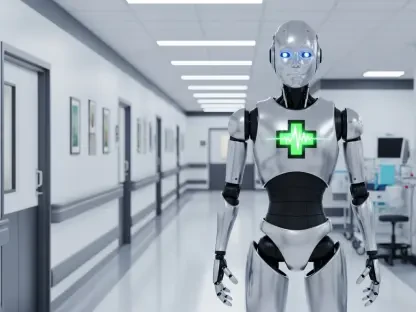The utilization of the My Health Record (MHR) system by general practitioners (GPs) in Australia has been a focal point of national health discussions. A recent survey by the Royal Australian College of General Practitioners (RACGP) unveils a notable gap in adoption: 31% of GPs rarely or never use this digital health record system. This discrepancy raises critical questions about the hindrances faced by healthcare providers and the efficacy of the system itself.
The My Health Record system, envisioned as a comprehensive digital health record repository, aims to facilitate coordinated and efficient healthcare services. However, the RACGP survey, conducted between April 10 and May 12, 2024, has brought to light significant operability issues. This suggests that the system is still grappling with fundamental usability and security concerns. These findings have emerged despite the fact that 99% of GPs are registered users, indicating that registration does not necessarily translate to frequent or effective use.
The Findings: Unearthing the Discrepancy
The RACGP survey paints a stark picture, revealing that nearly a third of GPs hardly engage with the MHR. This lack of engagement is attributed to several factors. Firstly, the system’s interface is often described as cumbersome and not user-friendly, imposing an additional administrative burden on already busy healthcare providers. Many GPs find that the system’s integration with existing practice management software is frequently unreliable, leading to inefficiencies and frustrations.
Another paramount concern among GPs is the security of patient data within the MHR system. Despite numerous assurances from governing bodies about the robustness of the system’s security measures, many healthcare providers remain skeptical about its vulnerability to breaches. This skepticism creates a reluctance among GPs to fully embrace the MHR for regular use. These issues underscore a critical gap between the theoretical benefits of a digital health record system and its practical implementation in clinical settings.
The Broader Context: MHR and Its Intended Benefits
My Health Record was designed as a comprehensive digital health record system aimed at improving the coordination of care across the healthcare continuum. GPs, specialists, and other healthcare providers can access a patient’s comprehensive medical history, which ideally facilitates better-informed clinical decisions. The intended benefits of MHR include reducing the duplication of tests, minimizing medication errors, and enabling quicker and more accurate diagnoses.
However, the realization of these benefits hinges on the widespread and consistent use of the system by all healthcare providers. The survey’s findings highlight a significant gap between the system’s intended advantages and its practical application in real-world settings. This gap prompts a re-evaluation of how the system is being received and utilized by healthcare providers, as well as an examination of the external factors that might be hindering its optimal use.
The ADHA’s Optimistic Viewpoint
In stark contrast to the survey’s findings, the Australian Digital Health Agency (ADHA) presents an optimistic outlook on the My Health Record system. The ADHA asserts that actual usage and engagement with MHR have been on the rise, not just among GPs but across various healthcare sectors, including specialists and aged care facilities. This broader adoption suggests a growing acceptance and recognition of the system’s potential benefits.
One of the most notable trends reported by the ADHA is the 26% rise in consumer interactions with MHR over the past year. Patients are increasingly accessing their own health data, such as pathology and diagnostic imaging reports. This trend underscores the ADHA’s vision of a more integrated, patient-centric healthcare system, where patients are more actively engaged in managing their own health. The ADHA continues to collaborate closely with the RACGP to encourage the usage of MHR and to address any concerns raised by healthcare providers.
Navigating the Usability Challenges
One of the most critical barriers to the widespread adoption of MHR among GPs is the system’s usability. Feedback from healthcare providers often characterizes the system as “clunky” and not intuitive, making it difficult to navigate efficiently. This poor user experience significantly hinders the system’s potential to streamline clinical workflows and improve healthcare delivery. Recommendations from expert groups, such as the Strengthening Medicare Task Force, have emphasized the need for substantial usability enhancements.
To address these usability concerns, there is a push to transition MHR’s data storage to an “atomized” format. This approach involves breaking down data into smaller, more manageable pieces, which could enhance the system’s responsiveness and ease of use. Improving the user experience is essential for alleviating the frustrations that many GPs face and for ensuring that MHR integrates more seamlessly into their daily clinical workflows. These enhancements are expected to result in a more intuitive system that can better meet the needs of healthcare providers.
Government Efforts and Future Directions
Recognizing the challenges reported by healthcare providers, the Australian government has committed significant resources toward improving the My Health Record system. A cornerstone of this initiative is a 10-year digital health blueprint, which includes an investment of A$2 billion aimed at enhancing the system’s interoperability, security features, and overall user experience.
The government’s comprehensive plan involves extensive collaboration with technology developers and key healthcare stakeholders. This collaboration aims to streamline the system, making it more user-friendly and secure. Additionally, it encompasses ongoing training and support for GPs to ensure they can efficiently navigate and utilize MHR. The ultimate goal is to create a seamless user experience that enhances healthcare providers’ confidence in the system’s reliability and security. This significant investment underscores the government’s commitment to optimizing digital health solutions and ensuring the successful implementation of MHR across Australia.
Conclusion: A Path Forward
One major hurdle to the widespread use of MHR among general practitioners is the system’s lack of user-friendliness. Healthcare providers often describe it as “clunky” and not intuitive, making it challenging to navigate efficiently. This poor user experience significantly impedes the system’s ability to streamline clinical workflows and improve healthcare delivery. Expert groups, including the Strengthening Medicare Task Force, have stressed the urgent need for significant usability improvements.
To tackle these usability issues, there’s an initiative to shift MHR’s data storage to an “atomized” format. This method involves breaking down data into smaller, more manageable pieces, which could boost the system’s responsiveness and user-friendliness. Enhancing user experience is crucial for reducing the frustrations that many GPs encounter and for ensuring that MHR fits smoothly into their daily clinical routines. These upgrades are anticipated to lead to a more intuitive system that can better cater to the needs of healthcare providers, ultimately helping to improve overall healthcare delivery.









